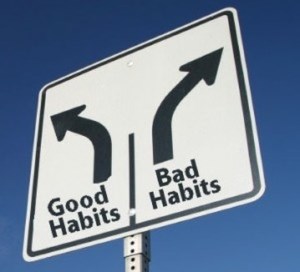
Habits, especially bad ones, can be an annoying part of our every day lives. They can range from small things—like chewing fingernails—to more serious actions—like alcohol or drug addictions. Currently, researchers are working to figure out how habits form and how they can be reversed.
Neuroscientists at the Massachusetts Institute of Technology and Dartmouth College are developing techniques for understanding habits. Thus far, their research has led to the discovery of
habit circuits
. These are regions of the brain that control habits and routines. Due to the way habit circuits work, researchers suggest that people can control their habits by conditioning the brain.
Neurologists involved in the study are also developing a concept called “the continuum of human behavior,” which helps explain what habits really are. One end of the continuum includes actions that are automatic, or actions that humans can perform while distracted or multitasking. The other end of the continuum includes actions that are new and unnatural, which take up one’s concentration.
Humans are constantly forming new habits. Whenever we try a new action, we observe—consciously or subconsciously—how beneficial it is, how much energy it requires, and how others react to it. Depending on these observations, a person may begin to form a new routine and repeat the action. As an individual repeats the action, it slides further from the unnatural end of the continuum toward the automatic one.
By the time an action becomes a routine, it is so ingrained in a person’s brain that only hard work and dedicated attention can reverse it. This takes serious effort because habits are based on a kind of reward system called “reinforcement contingencies.” That is, when someone is rewarded right after completing a certain action, the action is more likely to become habitual. Based on reinforcement contingencies, the brain makes a positive or negative association with every action. If a reaction is positive, then a habit is likely to form.
British psychologist Anthony Dickinson conducted an experiment in the 1980s to learn about habit formation. In the study, repeated at labs around the country to this day, scientists taught lab rats to press a lever after hearing a certain tone. In return, the rats received a reward of food. After several rounds of offering the rats treats, researchers changed the result: rats were then given an unpleasant ‘reward’—like too much food or food with a nauseating drug inside of it. Once rats were exposed to this negative reinforcement, scientists again administered the test to discern if the animals had formed a habit of pressing the lever.
Considering the results of this study, researchers from the University of Sydney and the University of New South Wales determined that the neocortex and the striatum are the regions of the brain involved in habit formation. When activities are performed non-habitually, neurons in the striatum are active throughout the activity. Yet, when the action becomes a routine, neurons are active at just the beginning and end of the action. This has implications for both memory-creation and habit-formation.
Based on additional research scientists have conducted with rats, they conclude that it is nearly impossible to break a habit that has been continuously and positively reinforced. These habits can merely be suppressed. So, while we cannot get rid of habits altogether, we can at least work to control them.
Much of this control occurs in the neocortex, scientists indicate. Here, we can condition our brains to alleviate a bad habit—slowly—or to substitute a bad habit with a good one. Visual and audio cues are especially important to the habit-breaking process. Researches also assert that those wishing to break bad habits must be patient with themselves.
As Mark Twain once said, “habit is habit, and not to be flung out the window by any man, but coaxed downstairs one step at a time.” With enough time, dedication, and concentration, we can eventually get rid of bad habits and, in the process, ultimately create a better life for ourselves and those who are influenced by our actions.
[Source:
Scientific American
]

